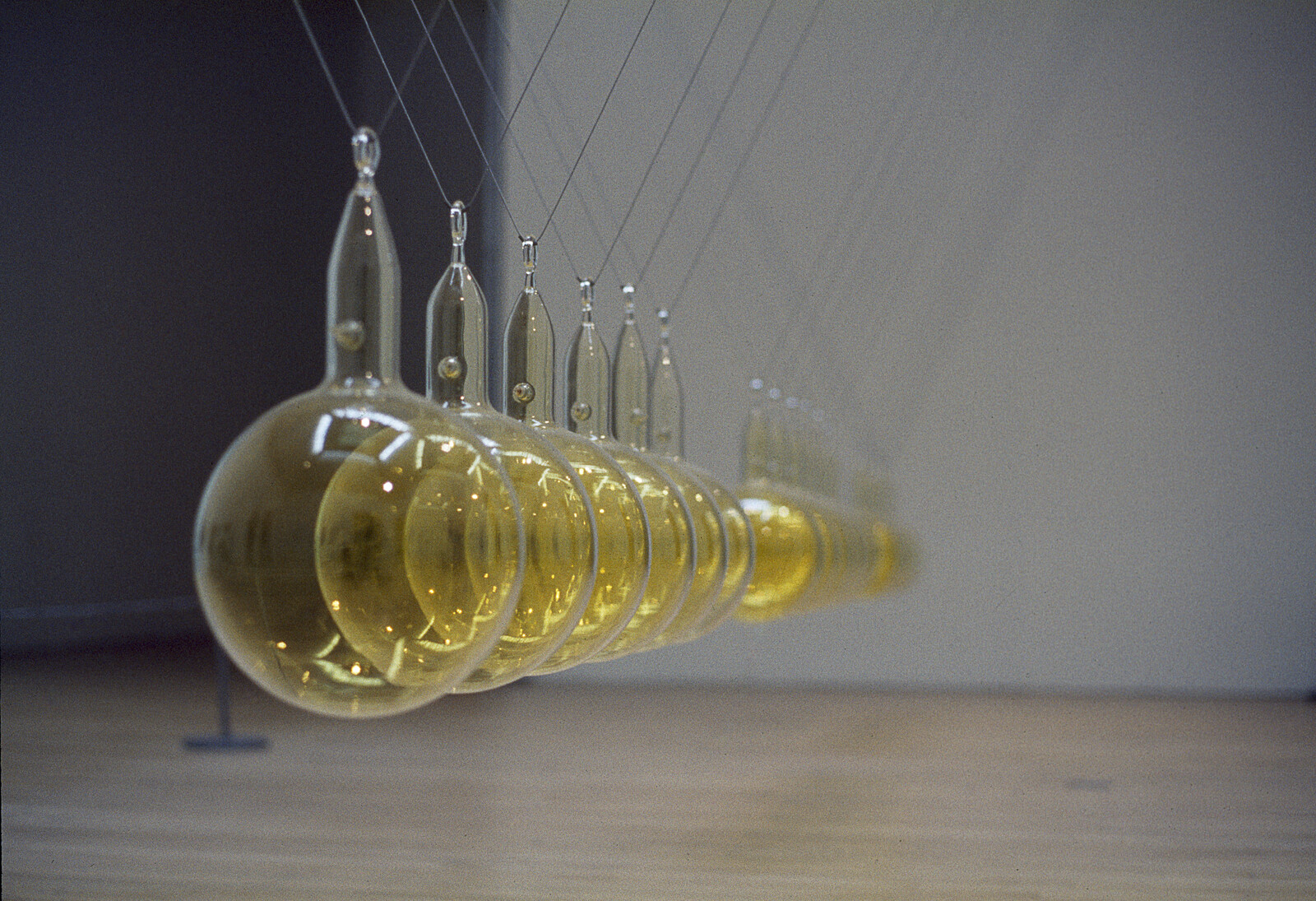IMMA’s 2024 programme highlights includes a retrospective exhibition of the work of pioneering modernist sculptor Hilary Heron; an immersive video installation by melanie bonajo presented in IMMA’s stunning 17th-century Baroque Chapel; and for the first time outside of the UK the showing of the work of ground-breaking artist Hamad Butt. A major group exhibition, Take a Breath, that provides an historical, social, political, and personal examination of breathing; why we breathe, how we breathe and what we breathe, includes live performances by Okwui Okpokwasili, Maria Hasabi and Camille Norment.
Other highlights include the presentation of We realised the power of it, an exhibition-project dealing with the history and archive of the radical film collective, Derry Film and Video Workshop; an exhibition of modernist and contemporary photographers derived from the David Kronn Collection; and the return of the popular Summer at IMMA programme and IMMA’s Eco Festival, EARTH RISING. IMMA is also excited to announce the opening of a new community space in partnership with Matheson created by Studio Makkink & Bey, and the roll out of a new IMMA MEMBERS programme with a series of bespoke events and happenings.
Continuing in 2024 is the momentous Museum wide exhibition Self-Determination: A Global Perspective, one of the largest exhibitions in the Museum’s history. The culmination of a three-year research project, this exhibition focuses on the nation-states that emerged in the wake of the First World War, exploring the role of art and artists in relation to the expression of national identities, nation-building, and statecraft. In February two new works commissioned by IMMA are presented as part of the exhibition - Turkish artist İz Öztat site-specific installation, Rest, and a new multi-narrative environment, An Dún, by Belfast based Array Collective.
Opening in March, We realised the power of it, is an exhibition-project by Sara Greavu and Ciara Phillips that deals with the history and archive of the radical film collective, Derry Film and Video Workshop. This installation of archive material includes footage, photographs and documents that trace a history of the workshop, exploring concerns with gender, class, collective organising, the Irish “national question” and the legacies of imperialism. Originally co-commissioned with EVA International, as part of the Guest Programme of the 39th EVA International.
In May, Hilary Heron: A Retrospective, celebrates the pioneering work of modernist Irish sculptor Hilary Heron (1923 – 1977). As the first major retrospective exhibition of Heron’s work since 1964, this exhibition will seek to correct the ways that her work has been overlooked in Irish and international histories of modern sculpture. Heron was a master welder, a practice highly unusual for an Irish artist, let alone a woman in the 1950s. Her work tactfully and skilfully broaches themes of gender, relationships, deep histories and religion through impressive, varied mediums including stone, lead, steel and wood.
IMMA’s summer season opens with Take a Breath, a major new exhibition that tracks the impact of air pollution from industrialisation to modern-day wars and how that effects our environment, our health and how we live. The act of breathing is central to existence, we inhale and exhale unconsciously, it gives voice through language and speech. The exhibition will explore the suppression of protests of voices from different communities, breath as a symbol of distinct voices, community, and resistance. Moving to the personal, the use of breath as meditation to move from the external to the internal, to consciously influence your breathing in daily life and focus on the present. Take a Breath features the work of Lawrence Abu Hamdan, Alex Cecchetti, Ammar Bouras, Belinda Kazeem-Kaminski, Hajra Waheed, Ana Mendieta, Isabel Nolan, among many others. The exhibition will explore breath through movement and sound with performances by Okwui Okpokwasili, Maria Hasabi and Camille Norment.
Opening in July, When the body says Yes, is an immersive video installation by melanie bonajo (they/them), a queer non-binary Dutch artist, filmmaker, sexological bodyworker and somatic sex coach and educator. The installation, originally commissioned by the Mondriaan Fund for the Biennale Arte 2022, is part of the artist’s ongoing research into the current status of intimacy in our increasingly alienating, commodity-driven world. For bonajo, touch can be a powerful remedy for the modern epidemic of loneliness.
Throughout the summer months Summer at IMMA will present a vibrant programme of artist performances, workshops, talks, and IMMA’s popular Music in the Courtyard series. The Summer programme culminates with EARTH RISING, a two-day festival of free events and experiences aimed at addressing the climate crisis and inspiring collective action towards a sustainable and hopeful future, taking place from 21 to 22 September.
In the sutumn an exhibition of photography from the David Kronn Collection celebrates the fourth donation from Irish-born, US-based collector David Kronn. This latest gift will bring the total number of works donated to IMMA to nearly 200 photographs. The present donation includes a diverse selection of works, ranging from 19th-century to the present day, by modernist photographers such as André Kertész, Irving Penn, Berenice Abbott, Brett Weston, Mike Disfarmer and Martine Franck, as well as contemporary works by Nicolai Howalt & Trine Søndergaard, and Doug DuBois.
IMMA is excited to present for the first time outside of the UK a retrospective exhibition of the work of Hamad Butt (1962-1994), developed in collaboration with Whitechapel Gallery, London, opening in December. Born in Lahore, Pakistan, and raised in London, he was British South Asian, Muslim, and queer. Before his AIDS-related death in 1994, aged 32, Butt completed and showed four key sculptural installations and left behind writings, drawings, paintings, and plans for new installations. He was a contemporary of the Young British Artists (and their peer at Goldsmiths) and critics described him as epitomizing the new “hazardism” in art. He exhibited widely in his lifetime, and he was arguably the first British artist to respond in a non-militant, conceptual mode to HIV/AIDS. His iconic sculptural works have never been shown together, his paintings and drawings never exhibited until now.
For further details on IMMA’s 2024 programme please visit imma.ie

